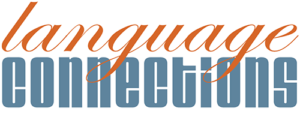Clinical Trials in Latin America
By Karen Politis Virk
As biopharmaceutical companies continue to expand into new emerging markets in order to cut costs and meet growing requirements, several countries in Latin America have exhibited significant growth in outsourced clinical research. According to DataEdge market research, Latin America is currently the world’s fourth largest clinical trials market. The six most dominant countries in the region are Argentina, Brazil, Mexico, Chile, Colombia, and Peru. These countries account for more than 2/3 of the region’s population and approximately 70% of all clinical trials conducted in the region. Although Mexico, Brazil and Argentina are the most established in clinical research, as regulatory environments evolve in Peru, Colombia and Chile; these countries have also become outsourcing locations.
One of the key factors that can be attributed to the growth of clinical research in these countries is their ability to meet subject enrollment requirements, especially as the requirement for greater numbers of subjects and larger patient diversity increase. Moreover, retention rates in Latin America are generally twice those in Western Europe, and significantly greater than the U.S. and Canada. Geographic proximity and a convenient time zone for western biopharmaceutical companies have also played a key role. In addition, there are a large number of highly educated clinical investigators who are interested in conducting clinical research, as indicated by the increasing number of research publications from these countries. There is only one translation requirement for regulatory documents which greatly facilitates conducting multinational, multicenter trials in these countries.
However, regulatory environments are still evolving, and disparities among different patient populations create ethical challenges. Last but not least, significant variations in regional Spanish and cultural differences among ethnic minority populations must be carefully addressed, especially in the preparation of patient materials. The focus of this article is primarily on increasing awareness and implementing strategies to overcome these barriers.
Disease Trends
The range of diseases occurring in these countries allows for a wide range of study. As a result of lifestyle changes, the incidence of cancer, heart disease and diabetes have increased markedly in Latin America as a whole. Both Chile and Peru reportedly have a high incidence of gastric carcinoma , and Peru has a high incidence of gallbladder cancer . Moreover, the incidence of cervical cancer is high throughout Latin America. Other types of cancers, such as breast, lung, and colorectal cancer have incidences similar to the U.S. and Europe. Infectious diseases primarily found in developing countries are also prevalent. In Peru, for example, there are a large number of treatment naïve patients with infectious diseases that have been eradicated in the U.S. and Europe. This provides the opportunity to access specialized patient populations for vaccine testing. Additionally, because the seasons in the Southern hemisphere complement those in the Northern hemisphere, this allows for many seasonal illnesses such as respiratory diseases to be studied year round. Finally, the large pediatric population – 30% of the population is reportedly under 14 years old – translates into a growing elderly patient population and potentially large new drug market.
Regulatory Environment
Although Brazil, Mexico and Argentina are clearly far ahead in the number of outsourced clinical trials as a result of their larger patient populations and more established regulatory environments (Brazil has the largest patient population followed by Mexico, and Argentina has the most evolved regulatory environment in Latin America), Colombia, Peru, and Chile are gradually becoming more established. Although each of these countries has a different regulatory approval process, there are some similarities. All of them function with both local and central ethics committees, and have a single regulatory agency responsible for regulating clinical trials (a branch of the Ministry of Health).
In all three countries, regulatory documents must first be submitted to Ethics Committees for approval, followed by approval from the national Ministry of Health. Although some countries in Latin America, e.g. Brazil, have made an effort to streamline approval processes and shorten timelines; Peru, Colombia, and Chile continue to have a sequential submission process. In Colombia the regulatory authority responsible for monitoring clinical research is the Instituto Nacional de Vigilancia de Medicamentos y Alimentos, and the average time for regulatory approval is 4-5 months. In Chile the Instituto de Salud Pública regulates clinical research and the average time for approval is approximately 3-4 months. In Peru the Instituto Nacional de Salud is the regulatory authority responsible for regulating clinical trials and the average time for regulatory approval is 5-6 months.
For the most part, clinical sites adhere to ICH-GCP guidelines as local regulations are aligned with the Declaration of Helsinki. However, sponsors have reported that more training and stricter monitoring need to be implemented. Despite this and the fact that regulatory environments are still evolving, there are several positive changes that indicate progress. For one thing, clinical investigators, clinical research staff and ethics committee training and requirements have improved. In addition, there has been an increase in the number of inspections of clinical sites. For example, in Peru, where both the local industry and the U.S. FDA (since 1996) have been involved in inspecting clinical trial sites, and as of 2000 all inspected sites have passed regulations.
Addressing the Challenges
In Peru, Chile and Colombia all regulatory documents must be provided in Spanish. Although the single translation requirement simplifies the preparation of regulatory documents, especially as compared to multilingual countries in Asia, variations of the Spanish language among these countries as well as the numerous regional dialects within each country must be carefully considered, especially when preparing patient materials. In addition to linguistic differences, cultural differences among ethnic patient populations must also be taken into consideration. Moreover, aspects of Latin American culture must be understood for effects on informed consent procedures. Many patient populations may have limited reading abilities and low economic status. In such cases, additional measures must be taken to ensure that patient rights are protected. Thus, conducting successful, quality trials in these Latin American countries is largely dependent on overcoming linguistic, cultural and socio-economic barriers.
Language Barriers and Translation
One of the biggest challenges, given that most studies originate in countries outside of Latin America, is language. Not only is careful translation critical to the logistics and procedures involved, it is even more crucial to ensuring the safety and ethical treatment of study participants — particularly in the area of informed consent. Addressing language barriers therefore requires an understanding of the patient demographics in each country. Although all regulatory documents must be provided in Castilian Spanish, the official and written language of the countries that we are discussing, any patient-related materials must be adapted for the target patient population. Experts who are native speakers and have a background in clinical research are best equipped to perform culturally sensitive life science translation.
Due to the large geographic barriers in the region, several variants of Latin American Spanish have developed. Not only are there variations of Spanish particular to each of these three countries, but within each country there are distinct regional dialects. Often words from local indigenous languages have replaced Spanish words or there are different meanings for words or phrases. In addition, large immigrant groups have also influenced the way the language is spoken.
For example, the people of Peru predominantly speak three different languages: Spanish, Quechua, (both of which are official languages) and Aymara (also widely spoken). The Spanish spoken in Peru has two forms or dialects, the Spanish of the coast and that of the central capital region. Quechua, the official language of the Incas, has had a great influence on Peruvian Spanish and several words from this indigenous language have permanently been introduced into the Peruvian Spanish language, e.g. papa (potato) and alpaca (llama wool).
This same is true of Chilean Spanish. Not only are there important differences in pronunciation, syntax and vocabulary between Chilean Spanish and other Latin American forms of Spanish, but regional differences are also significant. Guata (stomach) and guagua (infant) are examples of words adopted from Quechua which is mostly spoken in northern Chile. Other indigenous words that have entered Chilean Spanish originated from Aymara, predominant in the Andean north (such as phalta meaning avocado rather than the word aguacate used in much of Latin America) and Mapudungun which is most common in southern Chile.
In Colombia there are about 65 indigenous languages and nearly 300 dialects. Colombian Spanish is a mixture of the Caribbean dialect and Peruvian coastal dialect. Many communities on the Colombian coast have their own idioms and local usages as a result of different influences. Translators must take these differences in word use or meaning into account to avoid misunderstandings. For example, in Colombia, the formal you (usted) and informal you (tú) are not only interchangeable, unlike Castilian Spanish, but they are used to address people in a way that is unique from other variations of Spanish.
Dominant indigenous populations and large immigrant groups have not only influenced the way the language is spoken in each of these countries, but they are also responsible for differences in the local culture. Among the most common reasons for delays by ethics committees are problems with informed consent, and these are often associated with poor translation services. In large part, this can be avoided if linguistic and cultural differences are properly addressed.
In addition, obtaining informed consent according to the ethical guidelines set by countries established in clinical research is often challenging due to cultural differences. For example, unlike the U.S., patients in Latin America generally tend to accept the recommendation of their physician without question. As a result, patients may accept to participate in a clinical study without discussing other treatment options or potential risks with their physician. The challenge therefore is one of reconciling these differences in such a way that foreign sponsors respect the local culture while protecting patient rights. The solution lies largely in properly addressing linguistic and cultural differences.
Socio-economic Factors
Despite the fact that health systems vary from country to country, there is a distinction between public and private institutions. Although both can conduct clinical trials in these countries, there are epidemiological, socio-economic and cultural differences depending on the patient population. These factors, relevant to selecting a site for a specific clinical trial, also create an ethical dilemma for sponsors. For example, despite the fact that there have been efforts to improve health care coverage in some countries – in 2010 Peru approved universal health insurance, Chile’s 2005 health care reforms mandated greater health care coverage and 1993 health care reforms in Colombia pushed more universal coverage – many patients still do not have access to adequate health care or newer treatments. In many cases, their only treatment option may be that provided by clinical trials. As this makes them more vulnerable, measures must be taken to ensure that they are adequately informed of potential risks and that informed consent is obtained ethically.
In addition, because of their low socio-economic status, some patients have limited reading skills. In Peru, the country’s literacy rate has reportedly improved with recent economic growth, and illiteracy has dropped to 7.1 % 6. In Colombia literacy rates are reported at 90.4% and in Chile it is 95.7% 7. However, these statistics vary among different patient populations. For example, women tend to have a higher rate of illiteracy in these countries as do ethnic minority populations and individuals from rural areas. Furthermore, although some patients may not be considered illiterate, they may have a limited understanding of medical concepts or poor reading comprehension. Many indigenous populations face prejudices that interfere with their ability to access adequate health care and education. Despite efforts to protect the rights of these vulnerable patient populations by ethics committees, this issue constitutes a major challenge. Socio-economic barriers to obtaining ethical and voluntary informed consent, however, can be overcome if sponsors work closely with investigators and clinical trial staff to communicate expectations.
Conclusions
Over the last decade, the annual investment in the clinical trial sector in Latin America’s Andean Region has increased from $3-4 million to more than $50 million per year 8. Although Brazil, Argentina and Mexico continue to have more significant growth due to their larger patient populations and more established regulatory environments, clinical research in Peru, Colombia and Chile has also shown significant growth.
As the number of outsourced clinical trials continues to increase in these three countries, sponsors must address significant challenges, including linguistic, cultural, and socio-economic barriers. Despite the single translation requirement, there are variations of Spanish as well as regional dialects in each country that must be considered, especially when translating patient materials such as informed consent. Cultural differences and socio-economic factors that interfere with informed consent must also be taken into account. If these barriers are properly addressed, not only will patient be better protected, but the quality of clinical trials and healthcare will ultimately be improved in the region
References
- S. Gambrill, “Fighting the Logjam in Latin American Drug Trials,” Clinical Trials Today,
September 2006, 5-6. https://www. clinicaltrialstoday.com/2006/09/ fighting_the_lo.html|~https://www. clinicaltrialstoday.com/2006/09/ fighting_the_lo.html) - International Agency for Research on Cancer, https://globocan.iarc. fr/factsheets/cancers/stomach. asp|~https://globocan.iarc.fr/ factsheets/cancers/stomach.asp
- Lazcano-Ponce, N. Munoz et al., Epidemiology and Molecular Pathology of Gallbladder Cancer, CA: A Cancer Journal for Clinicians, 51 (6) 349-369 (2001).
- Clinical Research in Latin America www.ghf06.org/ghf06/files/SY14/ ghf_gotuzzo_ginebra.pdf
- Caparros. “Drug Development in Latin America Recent Trends and Competitive Advantages” Kendle RAP Webcast 2009 www. kendle.com/uploads/presentations/ Webcast_FocusLatam.ppt
- Ruiz. “Peru’s illiteracy rate drops to 7.1” July 23, 2008. Living in Peru News. https://www.livinginperu. com/news-6964-education-perus-illiteracy-rate-drops-7-1-percent)
- CIA World Factbook Literacy https://www.cia.gov/library/ publications/the-world-factbook/ fields/2103.html
- Gotuzzo “Clinical Research in Latin America: Constraints and 9. Opportunities” Universidad Peruana Cayetano Heredia June 2006 https://www.ghf06.org/ghf06/files/SY14/ghf_gotuzzo_ginebra.pdf
About Language Connections:
Language Connections is one of the top language service companies in the US. Over the last 30 years, we’ve focused on providing the best business translation services, interpreting services, as well as interpreter training and customized language training programs. In addition to top-tier corporate language training, we offer certified corporate interpreters and professional business translation services in 200+ languages. Our network includes linguists with backgrounds in all major industries. They’re ready to meet your needs, whether they’re for technical translation services, legal translation, government translation services, international development translation services, education translation services, life sciences translation, or something else. Reach out to us today for a free quote on our cost-efficient and timely translation services, interpreters, or other linguistic services.
Language Connections Inc.
2001 Beacon Street, Suite 105,
Boston, MA 02135
Phone: +1-617-731-3510
Email: service@languageconnections.com








